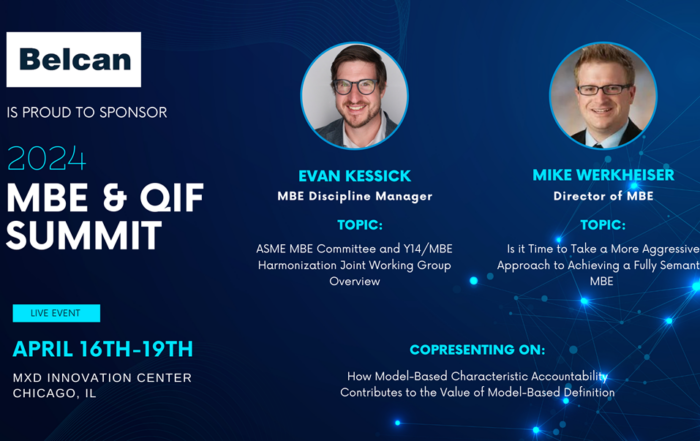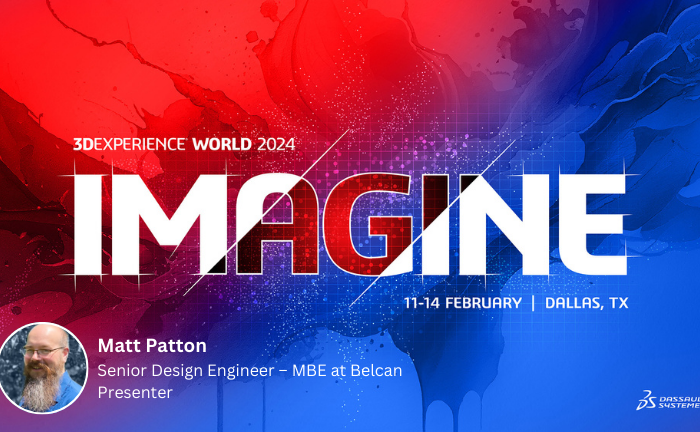Data interoperability is crucial to Model Based Definition (MBD) processes. Without interoperability, 3D models – and the digital solutions they support – become disconnected and perpetuate the silos of information and duplicative processes that they could be resolving. While interoperability is necessary for full value realization, there are challenges to achieving it.
What Is Data Interoperability, and Why Is It Important?
In our everyday lives, it seems like technology continues to evolve and grow in sophistication at a rapid pace. As soon as we get used to the status quo, new capabilities emerge that force us to adapt to stay current.
While there are many definitions, interoperability can be described as a system’s capability for information exchange and utilization of exchanged information. Creating interoperable MBD assets requires consideration of where and how all project information is stored, with respect to up and down stream consumption requirements and impacts. When information can be communicated system to system throughout the product lifecycle, it does not have to be recreated, reinterpreted, or reworked.
For example, data interoperability is very useful when designing and manufacturing a new product. All product information – including geometric dimensions, tolerances, materials needed, and notes – can be contained in a 3-dimensional product model. This data can then be accessed and used to support many kinds of lifecycle processes from design through manufacturing. Any time a change is made, that information automatically updates across all systems allowing for open lines of communication between all parties involved. Having interoperability streamlines the design and manufacturing process, generating a host of benefits that include increased product efficiency and reduced time to market.
Interoperability Challenges
While streamlined processes are the gold standard, incorporating interoperability in the MBD space has been a challenge for years. In an ideal world, continuously advancing technology would naturally facilitate the modernization of old methods and digitization of legacy processes. In the real world, the opposite happens, as data interoperability is difficult to implement at a high level. Here are three common challenges facing efforts to achieve interoperability:
- Digital Infrastructure
One of the biggest challenges to data interoperability is how widely software varies within a typical organization. Many companies operate using several types of software, versions of software, and networks. The lack of uniformity in the technology infrastructure makes total interoperability nearly impossible. Even when a matrix of software and connectivity methods have been established within a company, challenges exist for full lifecycle interoperability. The external ecosystem of software of suppliers, partners, or customers is another frontier entirely. When technology is not consistent, communication between systems is not consistent, making data interoperability break-down and generating inefficiencies.
- Industry and Company Standards
Industry and company regulations often act as a roadblock for interoperability, as they typically do not mesh well with modern technology. In many cases, standards have been set in place for years and are outdated or pegged to obsolete systems. In some situations, standards can be so old that current employees do not know why they were written the way they were or what technological constraints they were accounting for. This is problematic because without the tribal knowledge of why rules were set in place, engineers have a difficult time identifying the impacts of implementing new methods that align with mandatory regulations.
The process of changing and updating standards is slow. A best-practices approach to changing standards involves the expertise of multiple decision makers, extensive research, and thorough testing. The complexity, not to mention cost, of this process can result in significant resistance to updating regulations. In this case, the reduced risk of maintaining current standards and processes becomes prioritized over the benefits of enabling interoperable data assets.
- Cultural Resistance
By nature, most people are resistant to change. While implementing change within an organization is possible, it’s almost never easy. For one, it costs money and time to forgo old methods and teach all employees new processes. On top of the economic factor, it is difficult to bring all stakeholders, decisions makers, and team members into agreement about the changes. To effectively implement any kind of change, there must be total alignment up and down the chain of command. This is crucial to the success of implementing a new initiative within an organization because team members who are not on board may not follow new processes diligently. Even worse, they may continue to operate according to the prior status quo.
Are There Solutions to Interoperability Challenges?
A singular solution to interoperability challenges doesn’t exist. That said, there are a set of approaches that can serve to mitigate potential issues. These approaches provide organizations the opportunity to play a part in determining how challenges get resolved and can set the benchmark for how other companies will tackle the same issues down the road.
Approaches to Interoperability Challenges
- Build the Minimal Viable Product (MVP)
The MVP approach is aptly named, considering how valuable it can be for cautious or resource-limited organizations. The MVP approach allows you to start small and build up more system interoperability over time, avoiding the heavy expense and time commitment of a full overhaul. Use value stream mapping and process analysis to identify an area that will provide the most benefit. Demonstrate benefits by quantifying savings from the implemented MVP: cycle times, quality metrics, scrap/rework, etc. Starting small can drive the alignment to invest in scaled improvements and expansions to other processes and systems. Stringing together a series of small successes is an effective way to build momentum to take on bigger challenges.
- Scheduled Roll Out Method
After driving greater strategic alignment through the MVP process, craft a broader approach by prioritizing and scheduling new interoperability enablers year to year. This approach incrementally increases interoperability within a system, but on a scheduled and predictable timeframe, giving teams and organizations time to adjust and adopt.
Each approach has benefits including:
- Ability to forecast and plan ahead
- Buffer time to troubleshoot potential issues
- Time to bring all team members on board
While there is no quick fix to interoperability challenges, there are approaches geared to help reduce these issues. Belcan has decades of experience guiding our customers through complex implementation projects which are serving as the basis for the Data Interoperability tools and practices we’re rolling out. To learn more about how we can help you overcome interoperability challenges with tailored approaches please contact innovate@belcan.com .




